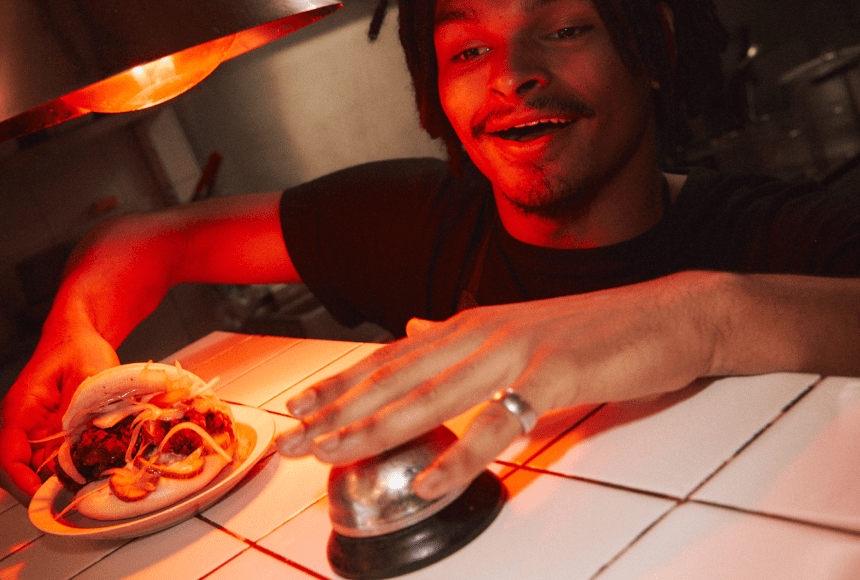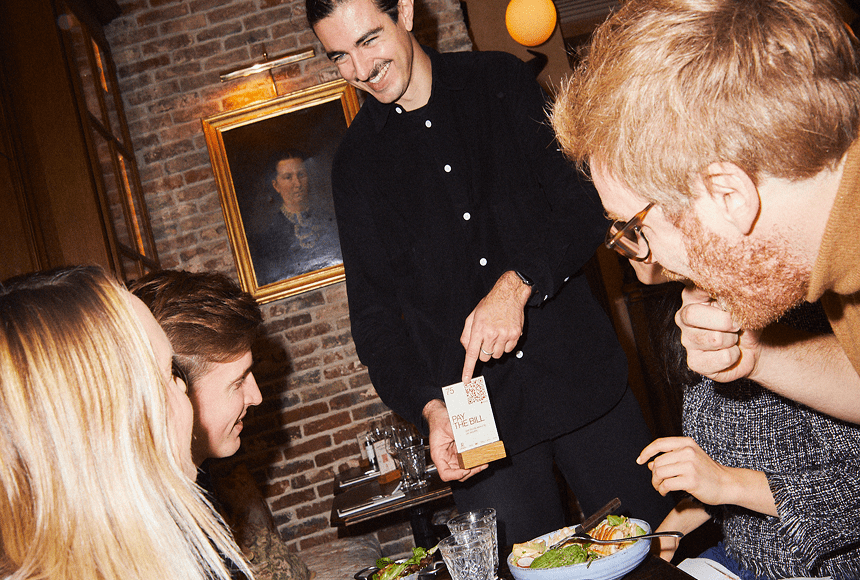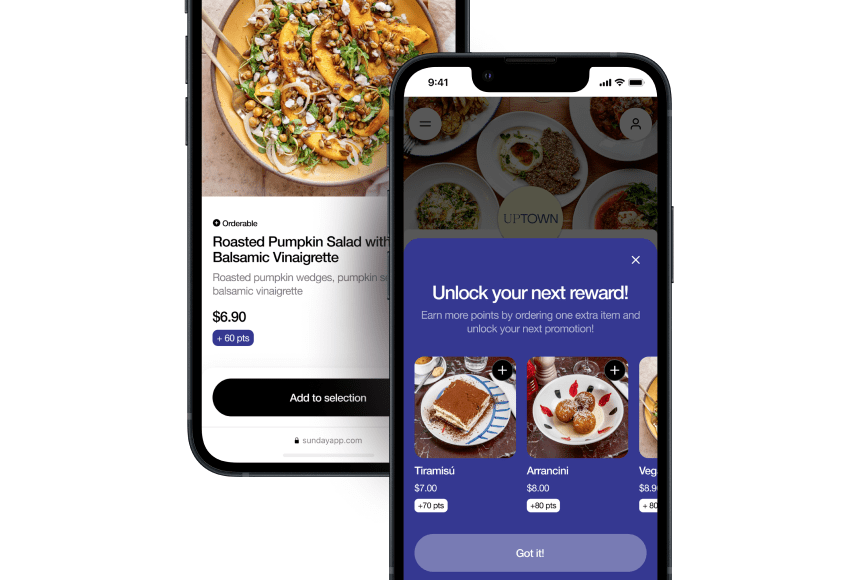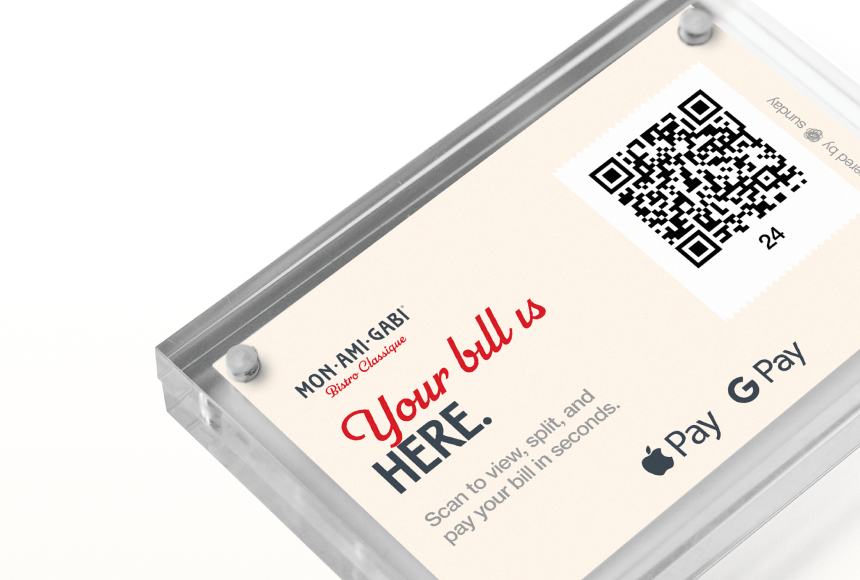
Reinventing the Arrival: Elevating the Guest Journey with QR Code Ordering
Walking Into a Modern Dining Experience
Think of the last time you walked into a busy restaurant. You stand at the entrance, notice people scanning a code at their table, and watch as servers drop by with food and drinks seemingly out of nowhere. It feels almost magical. There’s no conventional wait for a menu; no staff scurry to pass out thick booklets; no friction in placing an order. Instead, everything unfolds at the guest’s fingertips—literally.
That’s the essence of QR code ordering. It’s more than a flashy gimmick. For many restaurants, it redefines the guest experience the moment they step foot inside. Whether you run a casual café or a full-service establishment, harnessing this technology can streamline operations, boost sales, and create a modern vibe that guests increasingly crave.
But how does QR code ordering transform the customer experience so dramatically, especially from the get-go? Let’s break down the process, the benefits, and the potential pitfalls to avoid along the way.
The Instant “Wow” Factor: First Impressions Count
Restaurants often talk about the importance of a strong first impression. That initial minute sets the tone for the rest of the meal. Traditionally, a customer might wait to be greeted, then wait again for a menu, and possibly wait still longer for a server to return and take the order. All those micro-waits can add up to an underwhelming start.
Enter QR code ordering. The moment your guest is seated, they see a discreet code at their table—simple instructions guiding them to scan it with their phone. Within seconds, they have your entire menu on a device they already use daily. No waiting to track down a printed menu. No confusion about daily specials because you can update them on the fly. It’s instant engagement with your offerings.
This immediate access to the menu does more than just impress; it hands autonomy to the guest. They can browse at their own pace, compare dishes or drinks, and ask questions when they’re good and ready. That sense of control instantly nudges the dining experience toward a positive note.
How QR Code Ordering Streamlines Arrival
Let’s look at the arrival stage from your restaurant’s perspective. A new party walks in. Instead of handing each person a physical menu, your host or server can simply gesture to the QR code. From there, your guests:
- Scan the Code: They get immediate access to your full menu, including any pictures, item descriptions, or limited-time specials.
- Decide on Their Timing: Are they ready to order drinks right away? Or do they want a moment to chat? With the menu in hand, they aren’t forced to place an order before they’re prepared.
- Ask More Focused Questions: By the time a server approaches, customers already have an idea of what they might like, so the questions become more specific: “Is this soup vegetarian?” or “Could I make this gluten-free?” Instead of flipping through a paper menu, they can reference the digital info directly.
This process cuts down on the typical “rush and wait” dance. Servers benefit too—they can approach tables armed with insights, like seeing which items guests have viewed or placed in a virtual cart (depending on your system). That sets the stage for more meaningful interactions right from the start.
A Boost in Efficiency for Your Team
In many restaurants, arrival can be a hectic period, especially when multiple tables are seated at once. Your staff might juggle everything from water service to explaining daily specials to ensuring new guests know about house rules or promotions. Traditional menu distribution takes valuable time—time that could be spent enhancing the dining experience or focusing on hospitality.
When guests already have instant menu access via QR code, your staff has room to breathe. They can focus on:
- Personal Greetings: Instead of handing out menus, they can offer a warmer welcome. Maybe share a quick anecdote about the chef’s latest creation, or highlight the best table in the house for a scenic view.
- Engagement Instead of Logistics: Staff can chat briefly about dietary needs, recommend pairings, or simply bond with guests, rather than explaining how to open a thick menu binder.
- Faster Turnaround on Orders: If your system lets guests place orders directly from their phone, those first orders (drinks or appetizers) hit the kitchen faster. This often shortens the total dining cycle and can potentially lead to a higher table turnover rate—a win for both guests and revenue.
Curating a Modern, Tech-Savvy Image
Diners, especially younger ones, often appreciate the convenience and novelty of digital tools in their daily lives. Restaurants that adopt QR code ordering can tap into a tech-friendly vibe that resonates with these demographics. It signals that you’re an establishment that values innovation, efficiency, and a forward-looking approach.
Of course, you’ll have guests who prefer a more traditional style. That’s okay. In most cases, QR code ordering doesn’t need to replace physical menus entirely. You can keep a handful of printed copies for those who specifically request them. The key is giving people a choice—meeting them where they are. That combination of modern convenience and classic hospitality can strike just the right balance.
Upselling Opportunities from the Start
A well-designed digital menu can do more than just display items. It can highlight pairings, show enticing photographs, and suggest upsells in a non-intrusive way. When a guest scans your QR code and immediately sees top-sellers or featured cocktails, it can spark interest right away.
Consider features like:
- Visual Cues: Eye-catching photos or short videos that showcase signature dishes can whet appetites. Some restaurants report up to a 20% increase in sales of items that have appealing images attached.
- Suggestive Pairings: If a customer adds a steak to their cart, why not automatically recommend a red wine or a house-made sauce?
- Limited-Time Offers: A digital menu is far easier to update than a paper one. You can spotlight a unique appetizer for the weekend or highlight a “happy hour” discount in real time.
These little nudges can significantly impact your average check size. And they come at a stage when guests are most open to suggestions—right when they’re formulating their first order.
Seamless Integration with Payment and Reviews
One underrated aspect of QR code ordering is the potential to integrate payment, tips, and even reviews into a single user flow. For instance, sunday is a solution that allows diners to not only order via QR code but also pay and leave a tip without waiting for a staff member to bring a device. They can even drop a quick Google review on the spot—while the experience is fresh.
If you adopt a platform that handles both ordering and payment, you reduce the end-of-meal bottleneck. That means fewer lines at a register, quicker table turnover, and an option for guests who like the convenience of scanning a code to handle the entire process on their phone. This synergy often fosters a positive feeling that lingers long after guests have left.
Meeting Various Dietary Preferences with Ease
Menus that live online are easier to update for dietary labels—gluten-free, vegetarian, vegan, dairy-free, nut-free, or any other specifics. A guest with allergies or particular restrictions can see all relevant options highlighted. Instead of flipping through pages or cornering your server with detailed questions, they get answers up front.
By clarifying details in the digital menu, you also empower your staff. They’ll handle fewer “Can I eat this if I’m allergic to shellfish?” queries because the menu spells out exactly which dishes are safe. This transparency helps build trust and confidence—both for new customers and for regulars who appreciate the consistency.
Tackling Potential Drawbacks Up Front
Of course, not everyone is fully on board with the digital revolution. Some might find scanning codes intimidating or prefer the tactile feel of a classic menu. How do you address these concerns?
- Offer Alternatives: Always keep a small selection of physical menus on hand. Train your hosts or servers to kindly ask, “Would you like to scan the menu, or would you prefer a paper copy?” That small gesture ensures all guests feel cared for.
- Ensure Network Reliability: A glitchy Wi-Fi connection or poor phone signal can derail the best-intentioned QR code system. Invest in decent Wi-Fi or 4G backups, especially if your building’s layout hampers phone reception.
- Streamline the Digital Layout: Keep the online menu clutter-free. Group items logically, use clear categories, and avoid burying key details like pricing or dietary tags. The simpler it is, the more likely diners will embrace it.
By taking these measures, you reduce friction and show your guests you understand that technology should serve them, not complicate their experience.
Implementing QR Code Ordering: Practical Tips
Transitioning to QR code ordering doesn’t have to be disruptive. Consider these practical strategies to make the switch smooth:
- Set Clear Expectations: Let guests know they can scan a code for the menu, order from it, and possibly even pay. Brief signage or a server’s quick explanation goes a long way.
- Train Your Team Thoroughly: Your servers should be comfortable guiding customers through the scanning process. They should also know how to quickly troubleshoot any tech issues—like what to do if a customer’s phone won’t scan or if a particular item won’t load properly.
- Design a Visually Appealing Menu: Collaborate with a digital specialist or your platform provider. Use high-quality images, concise descriptions, and eye-catching highlights for best-selling items.
- Introduce Gradually: Start with a few tables or a specific section of your dining area. Gather feedback, tweak the menu layout, and refine the approach before rolling it out across the entire restaurant.
- Encourage Feedback: Ask guests how they liked the experience. Did they find it convenient or confusing? Their input can help you tweak everything from the code’s placement to the user interface.
Over time, you’ll find a sweet spot that works for your restaurant’s unique atmosphere and clientele.
Enhancing Guest Experience: The Ultimate Goal
At its core, QR code ordering does more than save a few minutes. It reimagines how guests first connect with your menu and your brand. Instead of feeling rushed to place orders or waiting impatiently for a server, they can immerse themselves in your offerings at their own pace. This empowerment can lead to bigger orders, more thoughtful choices, and a heightened sense of satisfaction.
From your team’s standpoint, the time saved distributing and collecting menus can be refocused on personal interactions. Staff can share the origin story of a special dish, describe where you source local ingredients, or spark up casual banter that makes diners feel at home. In essence, technology handles the repetitive tasks, freeing human beings to do what they do best—create memorable moments.
Looking to the Future: The Growing Appeal of QR Codes
While QR codes have been around for a while, their mainstream acceptance in the restaurant world skyrocketed in recent years. According to a 2022 report on QR code usage trends in the US, more than half of surveyed consumers expressed comfort and willingness to use QR codes for tasks like menu viewing and ordering. This shift isn’t a fad—it’s quickly becoming a norm.
As technology continues to evolve, you can expect even more integration with loyalty programs, dynamic pricing during off-peak hours, or personalized suggestions based on a diner’s past visits. The “arrival experience” might soon include a real-time look at table availability, or special seat suggestions for groups with certain preferences. By laying the groundwork now, you position your restaurant to take advantage of these future innovations more smoothly.
Partnering with Solutions Like sunday
One way to streamline your QR code strategy is by partnering with a solution like sunday. Their platform simplifies the entire process—guests scan a code, see the menu, place orders, pay, and leave tips or reviews all in one go. It’s a natural extension of the convenience factor that QR codes promise. Plus, when you integrate the ordering and payment system, you reduce friction points that can creep in between the “I’d like to order” stage and the final “I’m ready to pay” stage.
Keep in mind that you don’t have to go entirely paperless. Many restaurants run a hybrid system, offering both physical menus and QR codes to accommodate all comfort levels. The key is to gently guide your guests to realize how quick and easy scanning can be—especially for the tech-savvy crowd who expect digital solutions in most aspects of their life.
Conclusion: A New Era of Dining Starts at Hello
From the moment a guest steps inside, QR code ordering can set the tone for a modern, streamlined, and exciting dining experience. Rather than rummaging for menus and waiting, your diners instantly tap into your culinary world, discovering flavors and specials at their own pace. Meanwhile, your team channels the time saved into more meaningful interactions—an extra smile, a thoughtful recommendation, a personal anecdote about a dish.
In an industry that thrives on both speed and hospitality, QR code ordering checks all the boxes. It meets evolving consumer expectations, opens avenues for higher sales, and frees staff to focus on the human side of service. If you’re looking to transform your customers’ experience the moment they walk through the door, it’s time to consider weaving this technology into your restaurant’s fabric. Because in the end, every great meal starts with a warm welcome—and scanning a code can be the simplest path to that next memorable plate.
Find out more today
Drop us your details below and we’ll reach out within the next 24h




